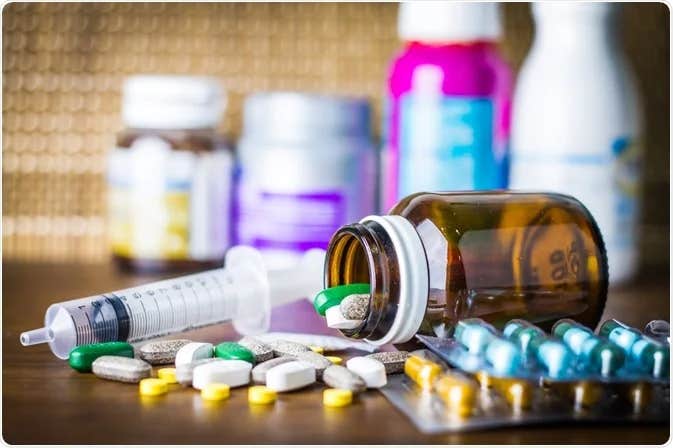Cutting-edge algorithm predicts drug interaction conflicts to save lives
When you take a medication orally, Special proteins called transporter proteins, found in the GI tract, aid in this journey.

Researchers have unveiled an innovative computer simulation that spotlights the distinct effects of medications on men and women. (CREDIT: Getty Images)
When you take a medication orally, it has to navigate through the digestive tract's lining. Special proteins called transporter proteins, found on the cells lining the gastrointestinal (GI) tract, aid in this journey. However, for many drugs, the specific transporter proteins they utilize to exit the digestive tract remain a mystery.
Understanding which transporters drugs rely on could revolutionize patient treatment. If two drugs use the same transporter, they may interfere with each other, leading to adverse effects and necessitating cautious prescription practices.
A collaborative effort among researchers from MIT, Brigham and Women's Hospital, and Duke University has devised a sophisticated strategy to identify the transporters involved in drug movement.
This approach combines tissue models with machine-learning algorithms, already showcasing its potential by uncovering an interaction between a widely prescribed antibiotic and a blood thinner.
Related Stories:
Giovanni Traverso, an associate professor of mechanical engineering at MIT and a gastroenterologist at Brigham and Women's Hospital, underscores the significance of their study: "This study is all about how we can model those interactions, which could help us make drugs safer and more efficacious, and predict potential toxicities that may have been difficult to predict until now."
Pinpointing the transporters crucial for drug absorption not only enhances treatment but also aids drug developers in formulating new drugs with improved absorbability.
Lead authors Yunhua Shi and Daniel Reker, former MIT postdocs, spearheaded the study published in Nature Biomedical Engineering.
Transporter Identification
Previous research has identified several key transporters in the GI tract, including BCRP, MRP2, and PgP, which facilitate drug passage through the intestinal lining. Focusing on these transporters, the researchers adapted a tissue model developed in 2020. This model, utilizing pig intestinal tissue cultivated in the lab, allows systematic exposure to various drug formulations to measure their absorbability.
Tissue viability assay and H&E histology staining to assess the safety and toxicity effect of ex vivo culture and low-frequency ultrasound on pig small intestine. (CREDIT: Nature Biomedical Engineering)
To dissect the role of individual transporters within the tissue, the researchers employed short RNA strands called siRNA to silence the expression of each transporter. By knocking down different combinations of transporters in various tissue sections, they discerned how each transporter interacts with different drugs.
Traverso explains their method: "We can close the roads separately to figure out if we close this road, does the drug still go through? If the answer is yes, then it's not using that road."
Testing 23 commonly used drugs using this approach enabled the researchers to identify the transporters utilized by each drug. Subsequently, they trained a machine-learning model on this data, alongside information from drug databases. The model learned to predict drug-transporter interactions based on similarities in chemical structures.
Using this predictive model, the researchers analyzed 28 currently used drugs and 1,595 experimental drugs, generating nearly 2 million predictions of potential drug interactions. Notably, the model flagged an interaction between doxycycline, an antibiotic, and warfarin, a commonly prescribed blood thinner. It also predicted interactions with digoxin, levetiracetam, and tacrolimus.
Validating Predictions
To validate these predictions, the researchers examined data from around 50 patients who had been prescribed one of the aforementioned drugs along with doxycycline. Analysis of patient records from Massachusetts General Hospital and Brigham and Women's Hospital confirmed that doxycycline intake alongside warfarin led to fluctuations in warfarin levels in the bloodstream.
Original data for substrate perfusion with siRNA treatment in the ex vivo system. (CREDIT: Nature Biomedical Engineering)
Traverso highlights the significance of their findings: "These are drugs that are commonly used, and we are the first to predict this interaction using this accelerated in silico and in vitro model."
Beyond existing drugs, this methodology holds promise for enhancing drug development. By identifying potential interactions early in the development process, drug developers can modify formulations to mitigate risks and enhance absorbability.
Tissue viability assay and H&E histology staining to assess the safety and toxicity effect of ex vivo culture and low-frequency ultrasound on pig small intestine. (CREDIT: Nature Biomedical Engineering)
Vivtex, a biotech company co-founded in 2018 by former MIT postdoc Thomas von Erlach, MIT Institute Professor Robert Langer, and Traverso, is leveraging this technology to develop innovative oral drug delivery systems tailored to minimize drug interactions and optimize absorption.
Unraveling the complexities of drug transport through the digestive tract opens avenues for safer and more effective medication administration. Through interdisciplinary collaboration and innovative methodologies, researchers are revolutionizing drug development and patient care.
Note: Materials provided above by The Brighter Side of News. Content may be edited for style and length.
Like these kind of feel good stories? Get the Brighter Side of News' newsletter.



